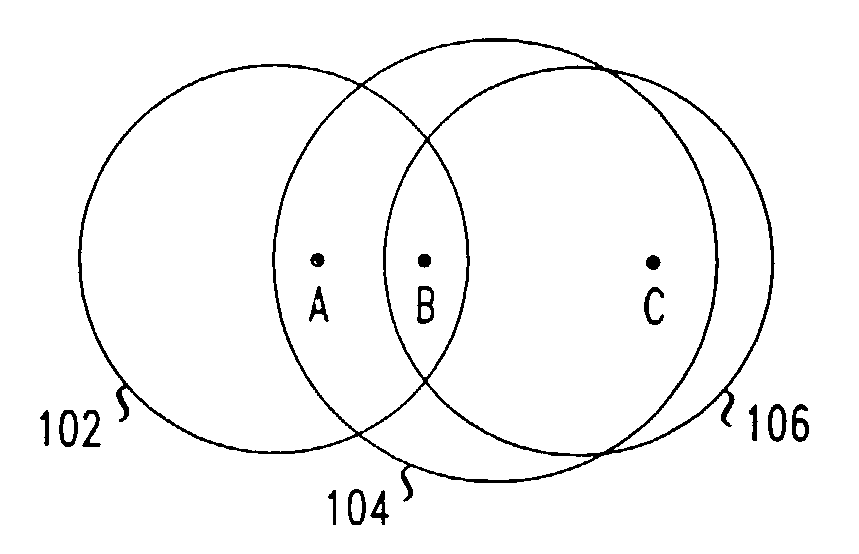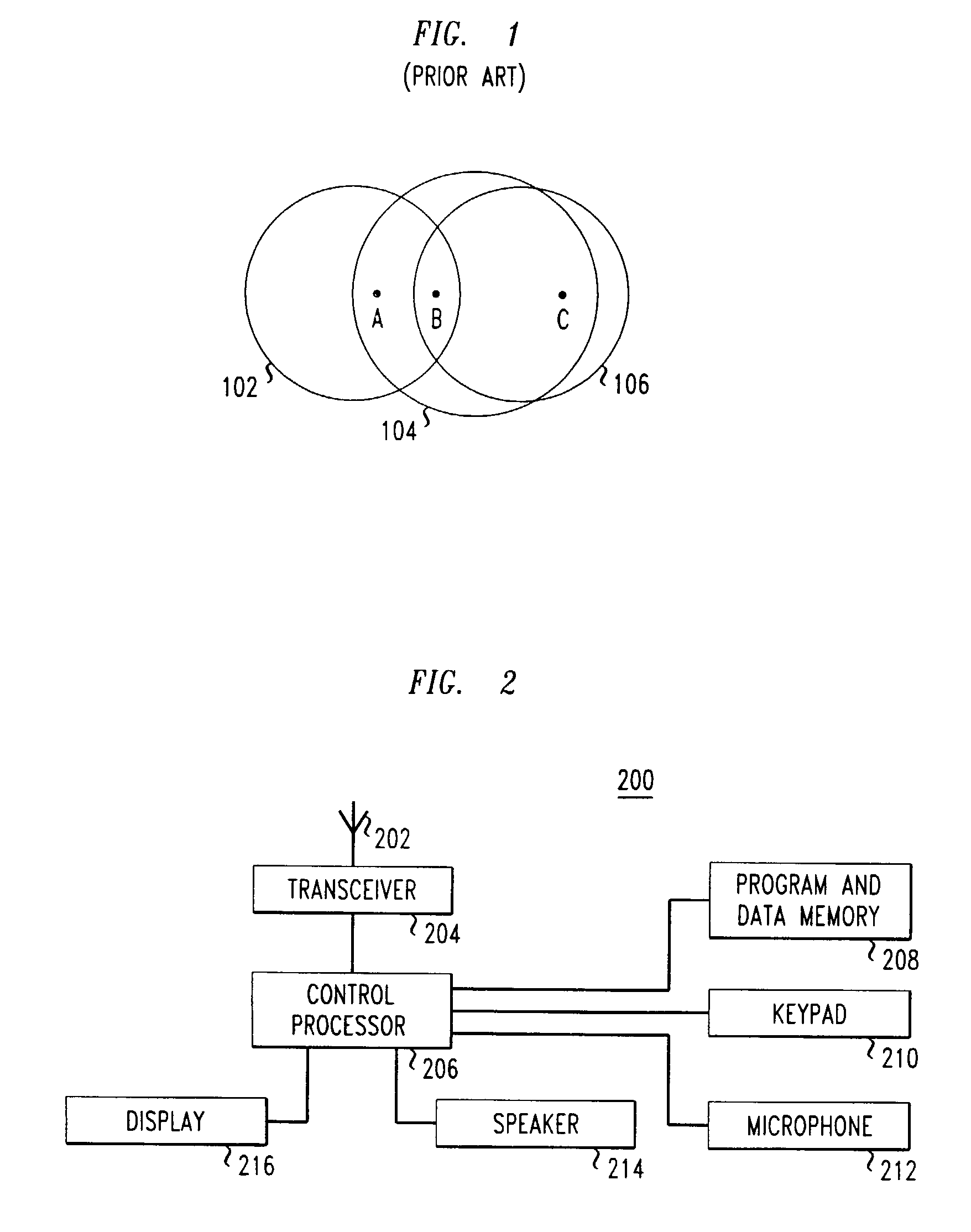Adaptive power level setting in an ad-hoc wireless network
a wireless network and power level technology, applied in the field of dynamic power level setting in ad-hoc wireless networks, can solve the problems of wireless device transmission power, communication between all devices becomes an interesting problem, wireless device connectivity, etc., and achieves efficient network topology, power is used more efficiently, and the effect of reducing interference in such clusters
- Summary
- Abstract
- Description
- Claims
- Application Information
AI Technical Summary
Benefits of technology
Problems solved by technology
Method used
Image
Examples
Embodiment Construction
[0017]A high level block diagram of a wireless device 200 which may be configured in accordance with the present invention is shown in FIG. 2. Wireless device 200 includes a transceiver 204 which sends and receives signals from antenna 202. The overall functioning of the wireless device 200 is controlled by a control processor 206 which operates by executing computer program instructions which are stored in program and data memory 208. It is these program instructions which define the overall operation of the wireless device 200. Program and data memory 208 also stores other data which may be necessary for the operation of the wireless device 200. In addition, program and data memory 208 has at least a portion of which is non-volatile, such that the information contained therein remains after power to the wireless device 200 is turned off. Although FIG. 2 shows program and data memory 208 as one component, it would be recognized by one skilled in the art that program and data memory...
PUM
 Login to View More
Login to View More Abstract
Description
Claims
Application Information
 Login to View More
Login to View More - R&D
- Intellectual Property
- Life Sciences
- Materials
- Tech Scout
- Unparalleled Data Quality
- Higher Quality Content
- 60% Fewer Hallucinations
Browse by: Latest US Patents, China's latest patents, Technical Efficacy Thesaurus, Application Domain, Technology Topic, Popular Technical Reports.
© 2025 PatSnap. All rights reserved.Legal|Privacy policy|Modern Slavery Act Transparency Statement|Sitemap|About US| Contact US: help@patsnap.com



